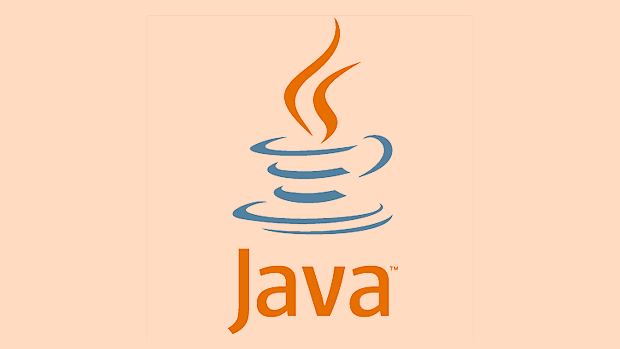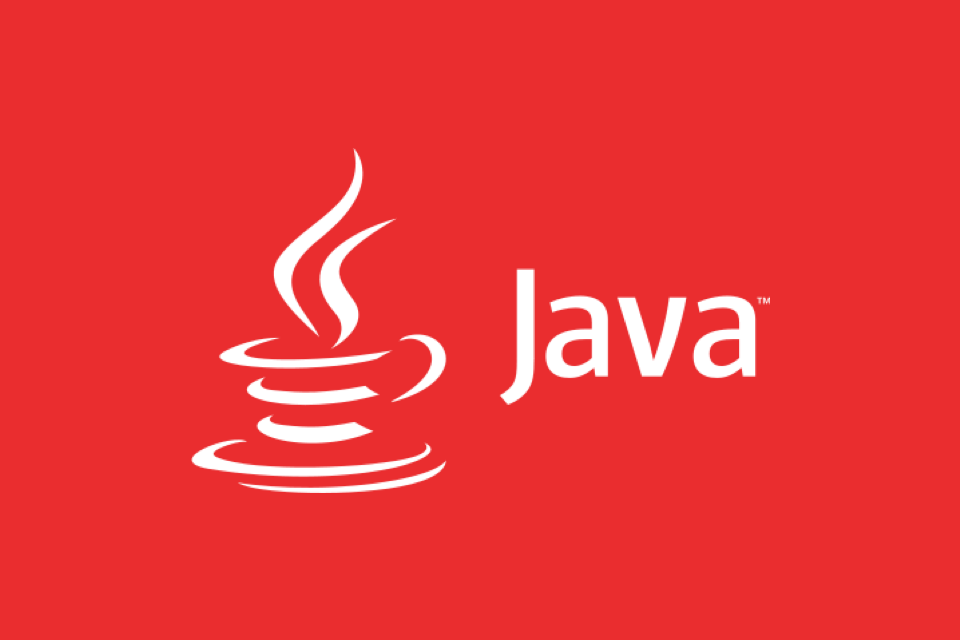Java NIO and Asynchronous I/O are suitable for high concurrency and I/O intensive scenarios. 1. NIO is based on buffers, channels and selectors, and supports non-blocking I/O and single-thread management of multiple connections; 2. AIO is truly asynchronous through asynchronous channels and callbacks or Future, and is completed by the operating system notification; 3. NIO is stable across platforms and is suitable for most high concurrency services. AIO performs better but complex on specific platforms; 4. Pay attention to buffer management, thread safety, resource release and backpressure issues when using it. It is recommended to give priority to using mature frameworks such as Netty to reduce complexity, and finally select a suitable model based on performance requirements and platform characteristics.

Java NIO (New I/O) and Asynchronous I/O are powerful tools for building high-performance, scalable applications—especially when dealing with large numbers of concurrent connections or I/O-bound operations. While traditional Java I/O is blocking and thread-per-connection based, NIO and its asynchronous counterpart offer non-blocking and event-driven models that make better use of system resources.

Here's a practical guide to understanding and using Java NIO and Asynchronous I/O effectively.
1. Understanding Java NIO: Buffers, Channels, and Selectors
Java NIO, introduced in Java 1.4, shifts from stream-based I/O to a buffer- and channel-based model. The core components are:

- Buffers : Data containers (like
ByteBuffer,CharBuffer) that hold data to be read from or written to. - Channels : Connections to I/O sources (files, sockets) that can read and write data to buffers. Unlike streams, channels are bidedirectional.
- Selectors : Allow a single thread to monitor multiple channels for events (eg, data ready to read).
Key Concepts in Practice
- Non-blocking mode : Channels can be configured to operate in non-blocking mode. When no data is available, they return immediately instead of blocking.
- Multiplexing with Selectors : A single thread can manage many channels using a
Selector. This is ideal for scalable network servers.
Selector selector = Selector.open();
ServerSocketChannel serverChannel = ServerSocketChannel.open();
serverChannel.bind(new InetSocketAddress(8080));
serverChannel.configureBlocking(false);
serverChannel.register(selector, SelectionKey.OP_ACCEPT);
while (true) {
selector.select(); // Blocks until at least one channel is ready
Set<SelectionKey> keys = selector.selectedKeys();
for (SelectionKey key : keys) {
if (key.isAcceptable()) {
// Accept new connection
} else if (key.isReadable()) {
// Read data from channel
}
}
keys.clear();
}This model enables one thread to handle hundreds or thousands of connections—great for chat servers, proxies, or real-time data systems.
2. Asynchronous I/O (AIO) with java.nio.channels.Asynchronous Channels
Asynchronous I/O, introduced in Java 7 (NIO.2), takes things a step further. It allows operations to complete in the background, notifying your application when done—either via callbacks or futures.

Key interfaces:
-
AsynchronousSocketChannel -
AsynchronousServerSocketChannel -
AsynchronousFileChannel
Using AIO with CompletionHandler
AsynchronousServerSocketChannel server = AsynchronousServerSocketChannel.open();
server.bind(new InetSocketAddress(8080));
server.accept(null, new CompletionHandler<AsynchronousSocketChannel, Void>() {
@Override
public void completed(AsynchronousSocketChannel client, Void attachment) {
// Accept next connection
server.accept(null, this);
// Read from client
ByteBuffer buffer = ByteBuffer.allocate(1024);
client.read(buffer, null, new CompletionHandler<Integer, ByteBuffer>() {
@Override
public void completed(Integer result, ByteBuffer buf) {
if (result > 0) {
buf.flip();
// Process data
client.write(buf, buf, new CompletionHandler<Integer, ByteBuffer>() {
@Override
public void completed(Integer result, ByteBuffer buffer) {
buffer.compact();
}
@Override
public void failed(Throwable exc, ByteBuffer buffer) {
try { client.close(); } catch (IOException e) {}
}
});
}
}
@Override
public void failed(Throwable exc, ByteBuffer buf) {
try { client.close(); } catch (IOException e) {}
}
});
}
@Override
public void failed(Throwable exc, Void attachment) {
// Handle error
}
});This callback-driven approach reduces thread overhead and is excellent for latency-sensitive applications.
Using AIO with Futures
You can also use Future -based APIs for simpler cases:
AsynchronousSocketChannel client = AsynchronousSocketChannel.open();
Future<Void> connectOp = client.connect(new InetSocketAddress("localhost", 8080));
connectOp.get(); // Wait for connection
ByteBuffer buffer = ByteBuffer.wrap("Hello".getBytes());
Future<Integer> writeOp = client.write(buffer);
int bytesWritten = writeOp.get(); Futures are easier to reason about but block on .get() , so they're best used in controlled environments.
3. When to Use NIO vs. AIO
Choosing between NIO and AIO depends on your use case and platform:
| Feature | NIO (Selector-based) | AIO (Asynchronous I/O) |
|---|---|---|
| Threading Model | Reactor pattern (event loop) | Proactor pattern (OS-level async) |
| OS Support | Works everywhere | Full support mainly on Unix/Linux (via epoll), Windows (IOCP) |
| Complexity | Moderate (managing states, buffers) | High (callback nesting, error handling) |
| Performance | Excellent for high concurrency | Potentially better for very high I/O load |
| Use Case | Web servers, proxies, custom protocols | High-throughput services, real-time systems |
? Tip : On Linux, NIO with
epollis often faster and more stable than AIO. AIO may not provide significant benefits unless you're pushing extreme I/O loads.
4. Common Pitfalls and Best Practices
- Buffer Management : Always flip() after writing to a buffer and compact() after reading.
- Thread Safety :
Selectoris not thread-safe; usually accessed by one dispatch thread. - Resource Leaks : Always close channels and deregister keys to avoid memory leaks.
- Backpressure : Handle slow consumers—don't flood channels with data.
- Use Frameworks When Possible : Consider Netty or Undertow instead of raw NIO/AIO—they abstract complexity and are battle-tested.
Final Thoughts
Java NIO and Asynchronous I/O open the door to building scalable, efficient applications. While NIO gives you fine-grained control over non-blocking I/O with selectors, AIO pushes the async model further with OS-level completion notifications.
For most developers, starting with NIO concepts (especially through frameworks) is more practical. AIO is powerful but underused due to platform inconsistencies and complexity.
Either way, understanding these models helps you make better architectural decisions when performance matters.
Basically, know your tools—and when to let someone else's framework handle the heavy lifting.
The above is the detailed content of A Guide to Java NIO and Asynchronous I/O. For more information, please follow other related articles on the PHP Chinese website!

Hot AI Tools

Undress AI Tool
Undress images for free

Undresser.AI Undress
AI-powered app for creating realistic nude photos

AI Clothes Remover
Online AI tool for removing clothes from photos.

Clothoff.io
AI clothes remover

Video Face Swap
Swap faces in any video effortlessly with our completely free AI face swap tool!

Hot Article

Hot Tools

Notepad++7.3.1
Easy-to-use and free code editor

SublimeText3 Chinese version
Chinese version, very easy to use

Zend Studio 13.0.1
Powerful PHP integrated development environment

Dreamweaver CS6
Visual web development tools

SublimeText3 Mac version
God-level code editing software (SublimeText3)

Hot Topics
 What is the `enum` type in Java?
Jul 02, 2025 am 01:31 AM
What is the `enum` type in Java?
Jul 02, 2025 am 01:31 AM
Enums in Java are special classes that represent fixed number of constant values. 1. Use the enum keyword definition; 2. Each enum value is a public static final instance of the enum type; 3. It can include fields, constructors and methods to add behavior to each constant; 4. It can be used in switch statements, supports direct comparison, and provides built-in methods such as name(), ordinal(), values() and valueOf(); 5. Enumeration can improve the type safety, readability and flexibility of the code, and is suitable for limited collection scenarios such as status codes, colors or week.
 What is the interface segregation principle?
Jul 02, 2025 am 01:24 AM
What is the interface segregation principle?
Jul 02, 2025 am 01:24 AM
Interface Isolation Principle (ISP) requires that clients not rely on unused interfaces. The core is to replace large and complete interfaces with multiple small and refined interfaces. Violations of this principle include: an unimplemented exception was thrown when the class implements an interface, a large number of invalid methods are implemented, and irrelevant functions are forcibly classified into the same interface. Application methods include: dividing interfaces according to common methods, using split interfaces according to clients, and using combinations instead of multi-interface implementations if necessary. For example, split the Machine interfaces containing printing, scanning, and fax methods into Printer, Scanner, and FaxMachine. Rules can be relaxed appropriately when using all methods on small projects or all clients.
 Asynchronous Programming Techniques in Modern Java
Jul 07, 2025 am 02:24 AM
Asynchronous Programming Techniques in Modern Java
Jul 07, 2025 am 02:24 AM
Java supports asynchronous programming including the use of CompletableFuture, responsive streams (such as ProjectReactor), and virtual threads in Java19. 1.CompletableFuture improves code readability and maintenance through chain calls, and supports task orchestration and exception handling; 2. ProjectReactor provides Mono and Flux types to implement responsive programming, with backpressure mechanism and rich operators; 3. Virtual threads reduce concurrency costs, are suitable for I/O-intensive tasks, and are lighter and easier to expand than traditional platform threads. Each method has applicable scenarios, and appropriate tools should be selected according to your needs and mixed models should be avoided to maintain simplicity
 Differences Between Callable and Runnable in Java
Jul 04, 2025 am 02:50 AM
Differences Between Callable and Runnable in Java
Jul 04, 2025 am 02:50 AM
There are three main differences between Callable and Runnable in Java. First, the callable method can return the result, suitable for tasks that need to return values, such as Callable; while the run() method of Runnable has no return value, suitable for tasks that do not need to return, such as logging. Second, Callable allows to throw checked exceptions to facilitate error transmission; while Runnable must handle exceptions internally. Third, Runnable can be directly passed to Thread or ExecutorService, while Callable can only be submitted to ExecutorService and returns the Future object to
 Understanding Java NIO and Its Advantages
Jul 08, 2025 am 02:55 AM
Understanding Java NIO and Its Advantages
Jul 08, 2025 am 02:55 AM
JavaNIO is a new IOAPI introduced by Java 1.4. 1) is aimed at buffers and channels, 2) contains Buffer, Channel and Selector core components, 3) supports non-blocking mode, and 4) handles concurrent connections more efficiently than traditional IO. Its advantages are reflected in: 1) Non-blocking IO reduces thread overhead, 2) Buffer improves data transmission efficiency, 3) Selector realizes multiplexing, and 4) Memory mapping speeds up file reading and writing. Note when using: 1) The flip/clear operation of the Buffer is easy to be confused, 2) Incomplete data needs to be processed manually without blocking, 3) Selector registration must be canceled in time, 4) NIO is not suitable for all scenarios.
 Best Practices for Using Enums in Java
Jul 07, 2025 am 02:35 AM
Best Practices for Using Enums in Java
Jul 07, 2025 am 02:35 AM
In Java, enums are suitable for representing fixed constant sets. Best practices include: 1. Use enum to represent fixed state or options to improve type safety and readability; 2. Add properties and methods to enums to enhance flexibility, such as defining fields, constructors, helper methods, etc.; 3. Use EnumMap and EnumSet to improve performance and type safety because they are more efficient based on arrays; 4. Avoid abuse of enums, such as dynamic values, frequent changes or complex logic scenarios, which should be replaced by other methods. Correct use of enum can improve code quality and reduce errors, but you need to pay attention to its applicable boundaries.
 Exploring Different Synchronization Mechanisms in Java
Jul 04, 2025 am 02:53 AM
Exploring Different Synchronization Mechanisms in Java
Jul 04, 2025 am 02:53 AM
Javaprovidesmultiplesynchronizationtoolsforthreadsafety.1.synchronizedblocksensuremutualexclusionbylockingmethodsorspecificcodesections.2.ReentrantLockoffersadvancedcontrol,includingtryLockandfairnesspolicies.3.Conditionvariablesallowthreadstowaitfor
 How Java ClassLoaders Work Internally
Jul 06, 2025 am 02:53 AM
How Java ClassLoaders Work Internally
Jul 06, 2025 am 02:53 AM
Java's class loading mechanism is implemented through ClassLoader, and its core workflow is divided into three stages: loading, linking and initialization. During the loading phase, ClassLoader dynamically reads the bytecode of the class and creates Class objects; links include verifying the correctness of the class, allocating memory to static variables, and parsing symbol references; initialization performs static code blocks and static variable assignments. Class loading adopts the parent delegation model, and prioritizes the parent class loader to find classes, and try Bootstrap, Extension, and ApplicationClassLoader in turn to ensure that the core class library is safe and avoids duplicate loading. Developers can customize ClassLoader, such as URLClassL






